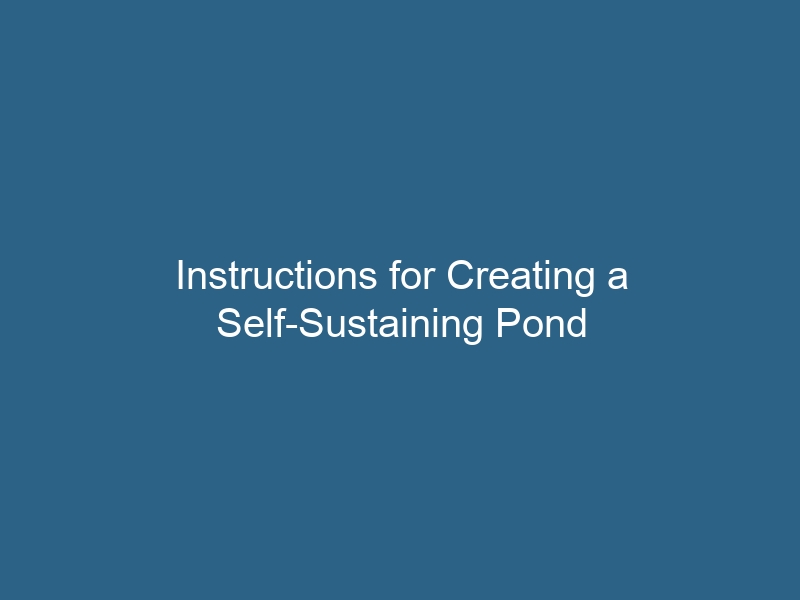Quck answer
A self-sustaining pond can be built by following these steps:
1. Choose a suitable location: Find an area in your backyard that receives adequate sunlight and is away from trees or other structures that could cause debris to fall into the pond.
2. Dig the pond: Excavate the area to create the desired shape and depth of your pond. Make sure to include shelves or ledges for aquatic plants.
3. Install a liner: Use a durable pond liner to prevent water leakage. Ensure that the liner is properly secured and smooth out any wrinkles.
4. Add a filtration system: Install a biological filtration system to maintain water quality. This system helps remove debris and harmful substances, keeping the pond ecosystem balanced.
5. Introduce aquatic plants and fish: Plant native aquatic plants to provide oxygen and shelter for fish. Introduce fish species that are suitable for your climate and pond size.
6. Maintain water balance: Regularly test the water quality and adjust pH levels if necessary. Remove excess debris and algae to prevent imbalances in the pond ecosystem.
By following these steps, you can create a self-sustaining pond that requires minimal maintenance and provides a beautiful and relaxing addition to your backyard.
Constructing a self-sustaining pond, especially if you plan to add fish, can be a challenging endeavor. To achieve this, there are two key factors to consider. First, the pond should not have an excessive number of large animals. Second, the pond must be sufficiently large to provide a suitable habitat for any aquatic creatures you wish to introduce. Keep in mind that even a self-sustaining pond will require occasional maintenance to maintain the natural balance and water chemistry.
Step 1
Determine the location of the pond in your yard. You can use a 25-foot garden hose to outline the pond’s boundaries. The hose allows you to shape the pond as desired. For a self-sustaining pond, a circumference of 25 feet and a depth of three feet will provide approximately 150 cubic feet of water. This is enough to support a large population of small fish, a few frogs, a small turtle, and possibly a medium-sized koi fish. The small fish should be mosquito fish, as they will consume mosquito larvae on the water’s surface, along with the frogs. The turtle and koi will feed on the mosquito fish.
Step 2
Excavate the pond to a minimum depth of three feet. The first 12 inches below the ground should be nearly vertical to deter predators like raccoons. Create a step-like shelf below this section for placing water plants, and then make the final 12 inches of depth vertical, similar to the first 12 inches.
Step 3
Install the pond liner into the excavated hole, anchoring the bottom with sand or coarse river stones. Use large stones to cover the top edge of the pond liner and conceal its edges.
Step 4
Fill the pond with water and arrange various water plants on the inner shelf of the pond, securing their pots with large stones.
Step 5
Introduce a large colony of mosquito fish to the pond to help control mosquito breeding in your yard. For a 150-cubic-foot pond, between 50 and 100 mosquito fish measuring 1 inch each are suitable when using a biological filter.
Step 6
Install an out-of-pond biological filter for the pond. This step is essential. As the fish grow and eat, they produce increasing amounts of ammonia, which is toxic to them. In a self-sustaining pond, this ammonia must be neutralized. This is achieved by creating a habitat for two types of bacteria, Nitrosomonas and Nitrospira. Working together, these bacteria break down ammonia and convert it into nitrates, which are absorbed and utilized by the pond plants. Without this biological filter, a 500-gallon pond with fish would not be sustainable and would resemble nothing more than a puddle.
Step 7
Introduce one or two 6-inch-long koi fish to the pond. Turtles and frogs will naturally find their way to the pond over time. While the pond will be self-sustaining, it is important to regularly test the water, at least once a month, using a pond test kit. This ensures the well-being of the pond’s inhabitants.


